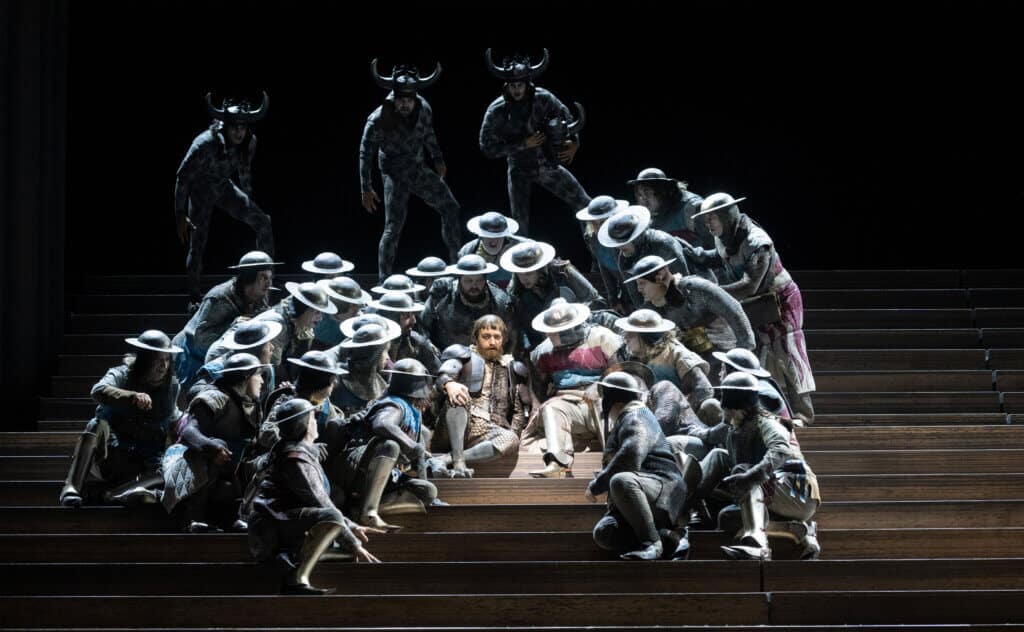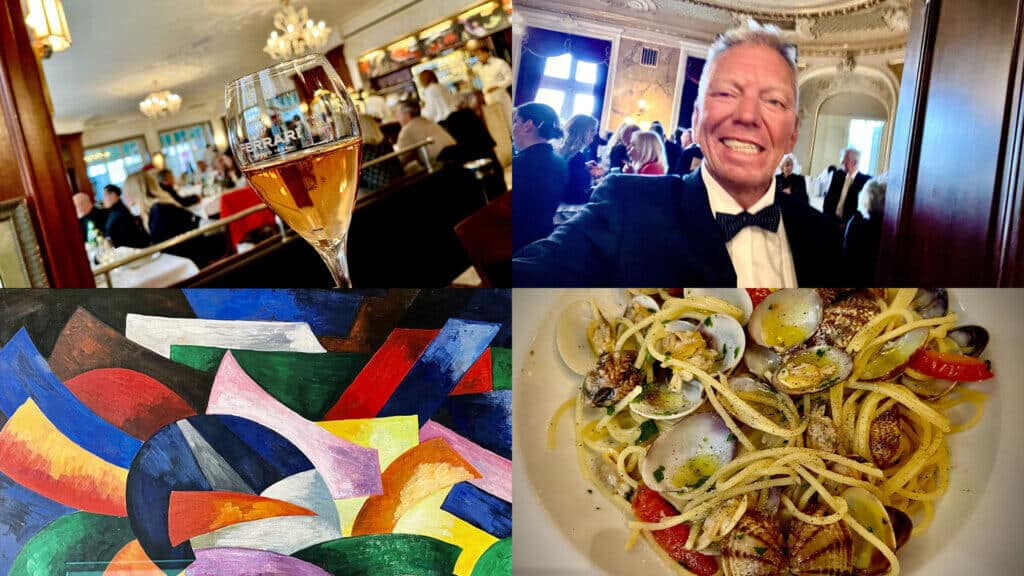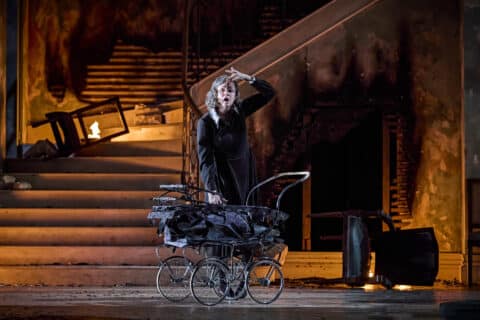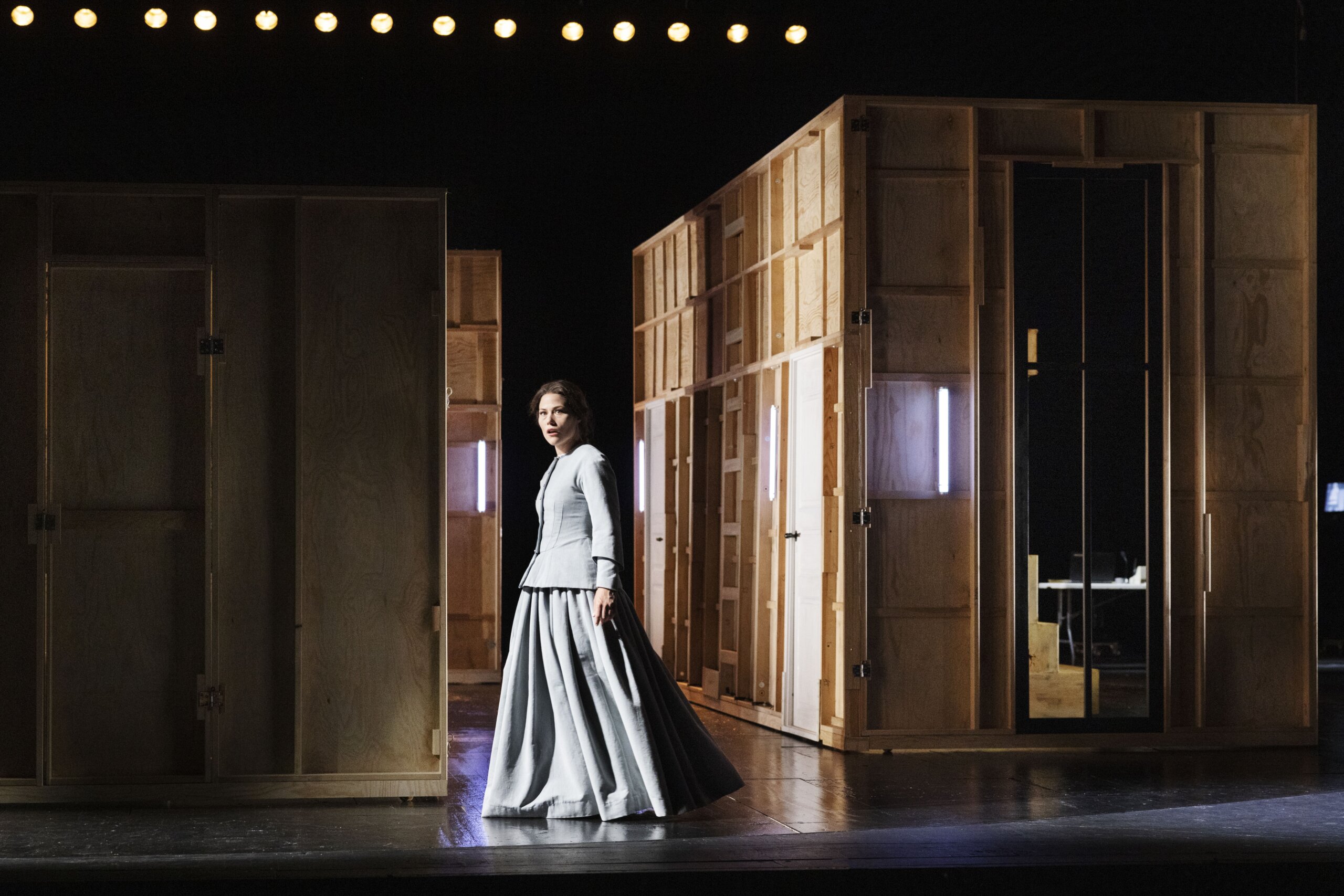IL TROVATORE • ZÜRICH
★★★★★☆

Photo: Monika Rittershaus
REVIEW IL TROVATORE: DEVILISHLY GOOD VERDI IN ZURICH
A hellishly vicious plot, staged with a sea of actors, a stellar cast of international soloists and a sublimely well-performing orchestra led by chief conductor Paolo Carignani.
That’s what the Zurich Opera treated its audience to on this rainy Saturday in September, the day before the long-awaited premiere of Valkyrie. Who says you can’t have several balls in the air at once?
This is yet another mark of the excellence of Opernhaus Zürich under the artistic direction of Andreas Homoki.
This version of Il Trovatore, The Troubadour, is not, for the sake of variety, in Homoki’s own staging.
Despite several popular hit arias, The Troubadour is ‘only’ the world’s 23rd most performed opera. In any case, the work is part of the show of power Verdi put on when he composed Rigoletto, The Troubadour and La Traviata within two years.
The staging is in the hands of British Adele Thomas, a new star in the opera sky, and one we will certainly be hearing more of.
The young director rose to fame only a few years ago when she staged sensational productions of Così Fan Tutte in Belfast and Handel’s Berenice at the Royal Opera House in London.
A nomination for the Laurence Olivier Award broke through – and Homoki gave her a chance he has hardly regretted.
The result is thoroughly entertaining costume theatre with a host of performers in colorful tableaux, played out on a giant staircase set with a host of hidden hatches that flap open and shut, letting new performers in and out.
The humiliating story is basically about two men fighting over the same woman.
The prelude is a diabolical witch’s tale in which an innocent gypsy woman is burned at the stake, suspected of being responsible for the infant duke’s fever.
Through the flames, she implores her loving but powerless daughter and commands her to avenge the injustice.
The daughter now abducts the boy in order to burn him alive, thus giving back from the same drawer. But this is where things go wrong. In the confusion she throws his own son into the flames.
The duke’s family finds the burnt remains of the baby’s skeleton in the embers and assumes the son has met his grisly fate.
In reality, it is now the gypsy daughter who raises the duke’s son as her own.
The secret remains intact. The interacting boy grows up and, as the Black Knight, soon becomes the leader of a local rebel movement aimed at overthrowing the Duke. At the same time, he ghostly haunts the night disguised as a troubadour, serenading the court lady Leonora, whom he has met at a tournament.
Never does he realise that the Duke on the throne is in fact his brother.
And to make sure it will end in disaster, they both fall in love with the same beautiful maiden – Leonora.
In the finale, the gypsy daughter manages to play a trick, so the duke ends up chopping off the head of the now captured rebel leader.
Only then, does the gypsy daughter let the duke know that he has just executed his own, much-loved, and forever-missing brother.
The diabolical gypsy revenge is complete when the duke collapses with his brother’s severed head dangling from his fist in the bloody curls.
Hilarious on the edge of tabloid, but you have to admit, it’s an act with spirit.
Adele Thomas has given the tragic story a fast-paced twist that radiates with celebration and comedy.
Many of the characters are whitewashed over the slightly naïve 15th-century purgatory look found in Hieronymus Bosch’s corny paintings of heaven, doom and hell.
Naked, terrified sinners are chased across the canvas by hideous devils with reptilian bodies and horns on their foreheads. The picture The Garden of Earthly Delights, a triptych (three-length painting) measuring almost 2 x 4 metres, is at Prada in Madrid and is a stunning sight.
Adele Thomas insists that comedy is part of the tragedy.
In this highly watchable production, she puts full force behind the point of view and comes up with a Troubadour that is certainly worth the journey.

ZÜRICH VERY QUICK GUIDE
You’re a decent human being and have just enjoyed a drink or two in the hotel bar after arriving late at your hotel.
I myself usually stay at the relaxed Hotel Europa 100 metres from the opera.
The next morning you get up fresh and stroll to the Kunsthaus Zürich, 10 minutes away.
The museum seems wealthy and has some nice permanent exhibitions of modern art + the normal museum selection of French Impressionists and Dutch masters. In particular, a digital venture called Digital Lab is worth a look.
After the museum which is done in a good hour including good coffee in the cafe, you sprinkle down to the lake and hop on a Kleine Seerundfart.
Comfortable turbo boats ensure fresh air and pretty sightseeing in just under an hour and a half. Sit inside or outside with the option of refreshments.
Lunch is recommended immediately afterwards at my favorite place Bindella, where of course you have booked well in advance.
Bindella is a lively, busy Italian restaurant in the old town with small winding streets and a lovely atmosphere. It has a high end feel a la FIAT and Victor and is a great place to have a good time.
For something a little more refined, head for Conti, owned by the same family and 10 minutes away.
Shopping on the world-famous Bahnhofstrasse is for the serious affluent with a penchant for Gucci and similar top brands.
After the evening’s performance, Brasserie Schiller is open on the corner opposite the opera. With its traditional brasserie cuisine and good service, it’s an excellent place for a quick late-night snack and reflection on the theatre experience.
The trip out to the airport takes 20 minutes by taxi the next morning. Easy, simple and with a short flight back to CPH.




